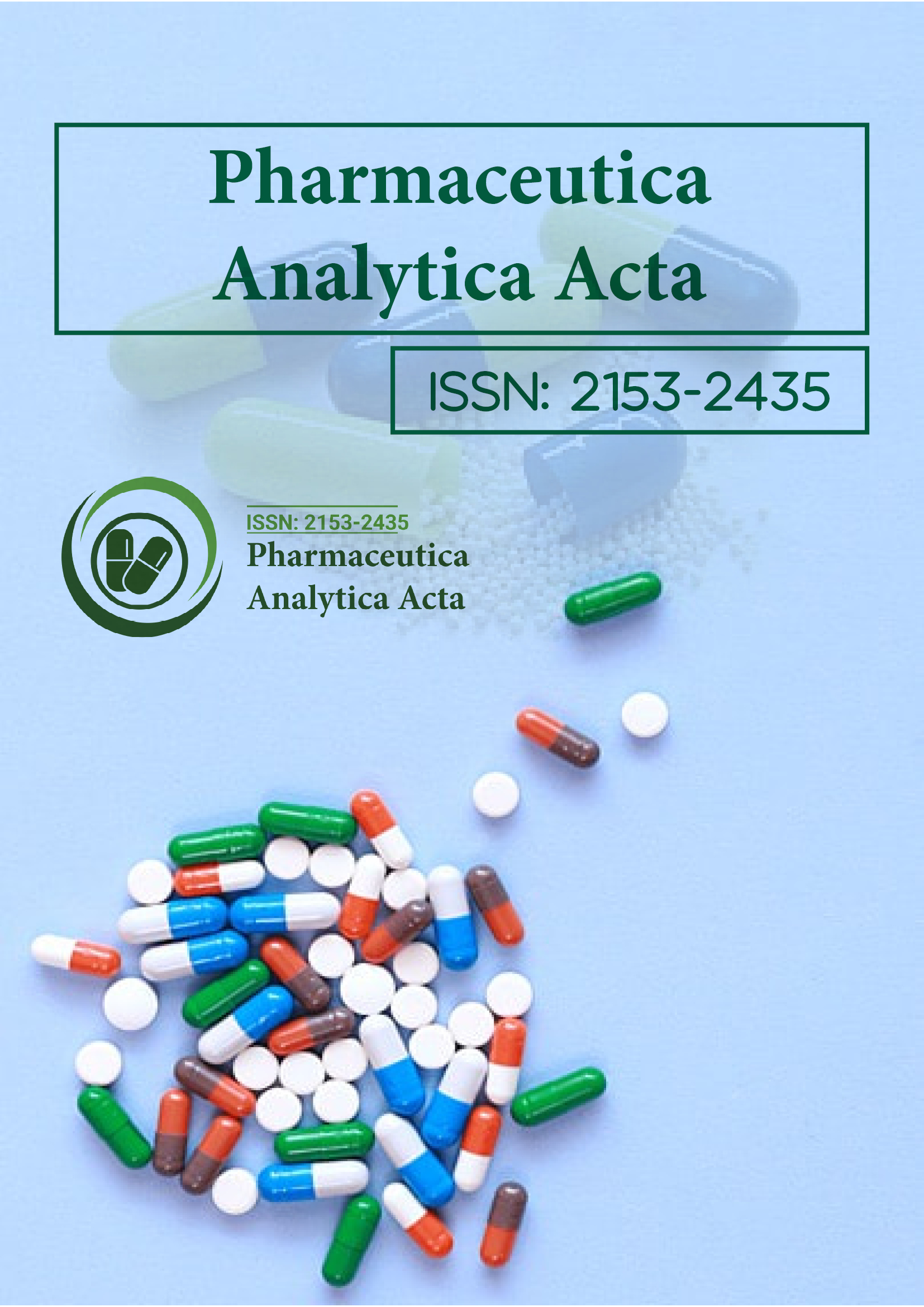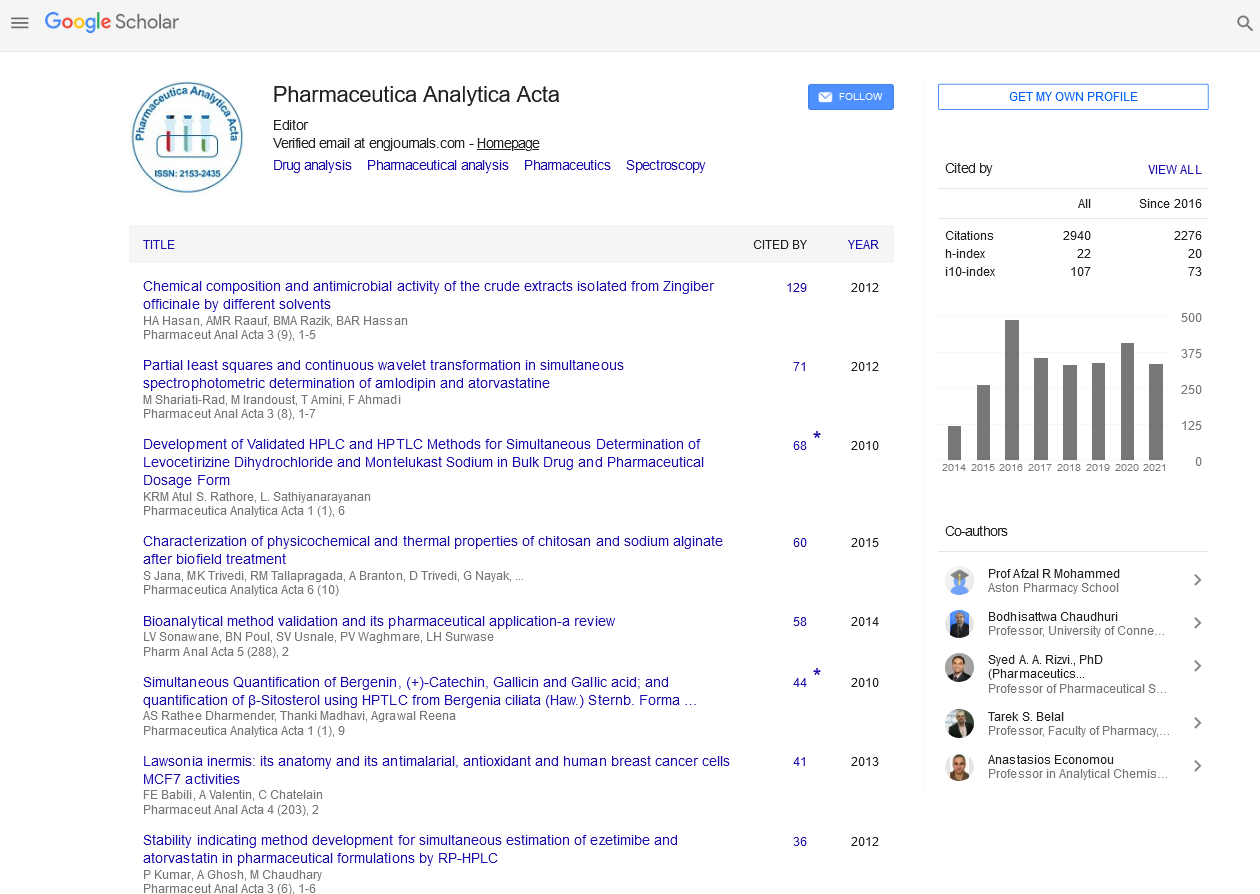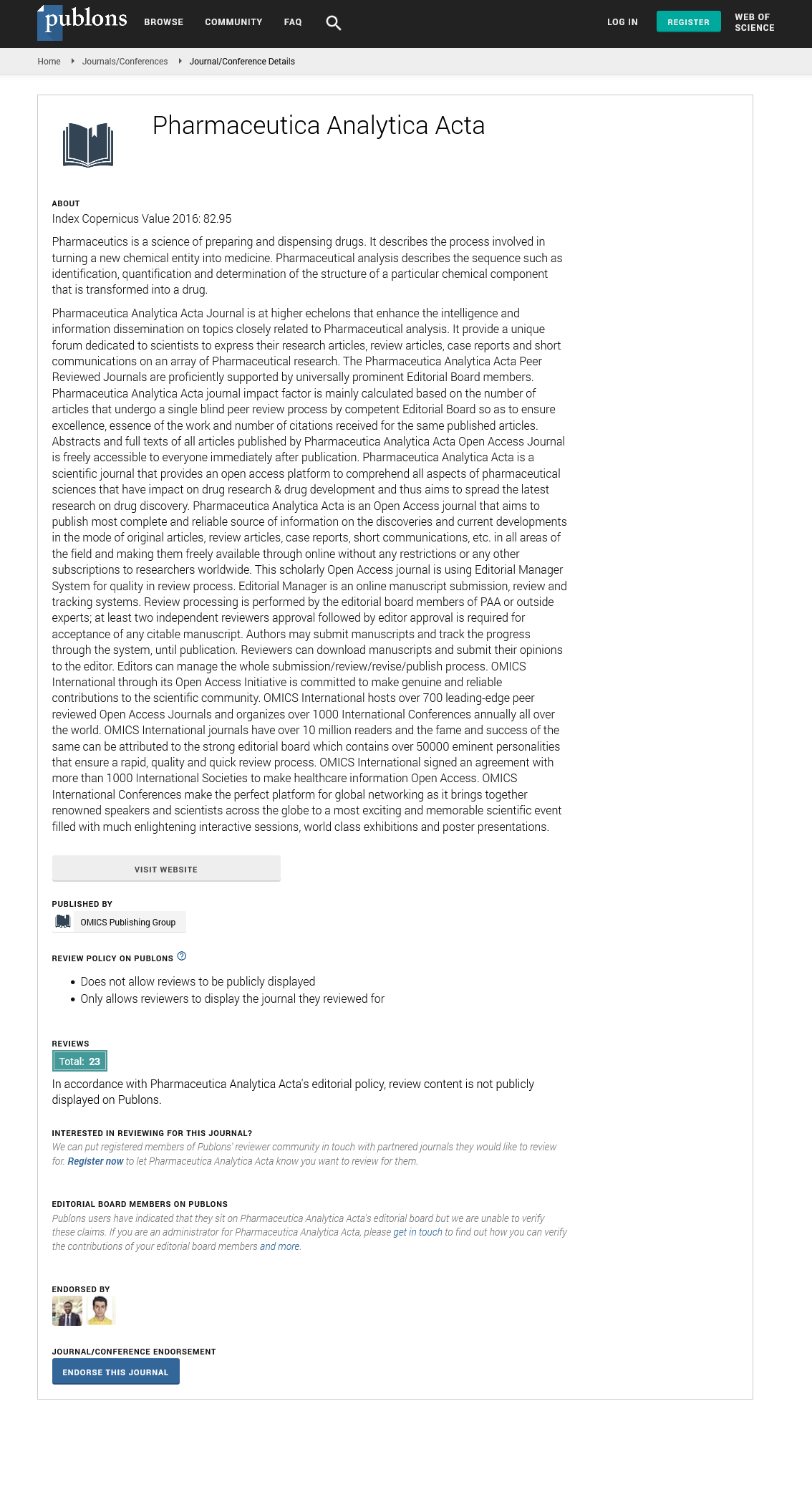Indexed In
- Open J Gate
- Genamics JournalSeek
- Academic Keys
- JournalTOCs
- The Global Impact Factor (GIF)
- China National Knowledge Infrastructure (CNKI)
- Ulrich's Periodicals Directory
- RefSeek
- Hamdard University
- EBSCO A-Z
- OCLC- WorldCat
- Publons
- Geneva Foundation for Medical Education and Research
- Euro Pub
- Google Scholar
Useful Links
Share This Page
Journal Flyer

Open Access Journals
- Agri and Aquaculture
- Biochemistry
- Bioinformatics & Systems Biology
- Business & Management
- Chemistry
- Clinical Sciences
- Engineering
- Food & Nutrition
- General Science
- Genetics & Molecular Biology
- Immunology & Microbiology
- Medical Sciences
- Neuroscience & Psychology
- Nursing & Health Care
- Pharmaceutical Sciences
Risk factors associated with diabetic retinopathy among type 2 diabetes patients at teaching hospital in Malaysia
4th International Conference and Exhibition on Pharmaceutics & Novel Drug Delivery Systems
March 24-26, 2014 Hilton San Antonio Airport, San Antonio, USA
Ahmed Alshalan and Mohamad Aljofan
Accepted Abstracts: Pharmaceut Anal Acta
Abstract:
Background: Diabetic retinopathy (DR) is the leading cause of blindness in the United States and it is the leading cause of new cases of blindness in adults aged 20-74. It is estimated that about 20% of patients with Type 2DM have evidence of diabetic retinopathy at diagnosis with diabetes. Objective: To evaluate the prevalence of DR and to determine risk factors related to diabetic retinopathy among type 2 diabetes patients attending endocrinology clinics at Hospital Universiti Sains Malaysia (HUSM). Subjects and Methods: The study design was observational prospective longitudinal follow-up study, the study was conducted with sample of 1077 type 2 diabetes mellitus outpatient recruited via attended the diabetes clinics at HUSM. Diagnosis of retinopathy is based on finding the diagnostic signs of retinopathy on eye exams by fundoscopy. Logistic regression analysis was used to assess the independent variables that affect the development of retinopathy. Results: The prevalence of retinopathy was 39.3%. It has been noticed from this study findings, that the progression of retinopathy is been influenced by five independent risk factors such as duration of diabetes, presence neuropathy, total cholesterol at second and third visit and creatinine clearance. Conclusion: DR is highly prevalent among type 2 DM. The progression of retinopathy is been influenced by five independent risk factors such as duration of diabetes, presence neuropathy, total cholesterol at second and third visit and creatinine clearance. DR is a serious diabetic complication and public health strategies are required in order to reduce its risk factors and decrease its prevalence.


